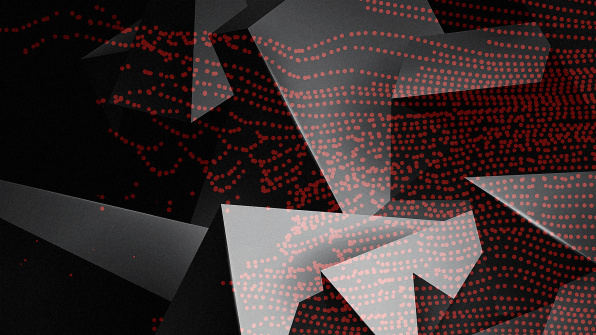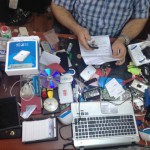Building A Better Understanding Human Trafficking, To Help End It
When the Trafficking Victims Protection Act (TVPA) was signed into law by President Clinton in 2000, it was the U.S. government’s first comprehensive attempt to curb human trafficking and involuntary servitude in the country–including everything from involuntary sex work to forced labor across a range of industries, including beauty and hospitality. It defined a trafficking victim as anyone coerced into labor against their will and makes punishable the means of coercion used by traffickers to control victims, like trickery and seizure of documents, where were difficult to prosecute under existing laws. Over the past 17 years, it’s been reauthorized four times and has effectively criminalized trafficking, which was previously undefined and prosecuted as a patchwork of crimes.
But the gains from the new law have stalled. “The prevalence of trafficking, from year to year, is actually not going down,” says Bradley Myles, CEO of the anti-slavery nonprofit Polaris, on a phone call to talk about their new report titled The Typology of Modern Slavery: Defining Sex and Labor Trafficking in the United States. “We’re not winning this fight.”

Through the report, Polaris aims to provide advocates and law enforcement with the beginnings of a path toward ending slavery, by cataloging, for the first time, the many varied ways it manifests in the U.S.
Trafficking in the U.S. is largely understood in the context of two overarching categories: sex trafficking and labor trafficking. But in its new report, Polaris identifies and defines 25 types of modern slavery–including escort work, food service, peddling, and beauty services–in an effort to more specifically address and eradicate trafficking in its various forms. For each category, Polaris describes a unique trafficker profile, recruitment tactics, the standard victim profile, and method of control.
“The lack of data that shows really at a granular level how human trafficking operates has been a persistent challenge in the field,” Myles says, adding that the broad definitions of trafficking have worked to obscure the way various networks actually operate and have resulted in an inability on the part of advocates and law enforcement to break up those networks.
In December 2007, Polaris launched the National Human Trafficking Hotline, which victims and survivors can call to be connected with advocates who offer support and services to get help and stay safe. Between then and December 2016, the organization fielded 32,208 potential cases of human trafficking and 10,085 potential cases of labor exploitation; the BeFree Textline, which launched four years ago, contributed to that total. Polaris’ research team combed through the calls and text, and cataloged those that contained enough data to classify (around 55% to 60% of the cases).
The resulting data set analyzed in the report is the largest on human trafficking in the U.S. ever compiled and publicly analyzed; however, Polaris says the numbers in the report are likely undercounts, as many victims may not know there is a hotline to call, or may be unable, because of their circumstances, to reach out. “If you can’t count the problem, you can’t fix it,” Myles says. “And because human trafficking is so diverse and heterogeneous and dynamic, you can’t fight it all at once; there’s no silver bullet solution. You have to break it up and fight it type by type.”

The tactic that Polaris suggests in The Typology of Modern Slavery is a far cry from what’s broadly known as the three Ps of the TVPA: prosecution, prevention, and protection. Those three Ps, Myles says, represent an incomplete solution; they fail to account for the fact that victims are often silenced, and also might fail to interpret and report their own situation as trafficking because it doesn’t exactly fit into the narratives more commonly found in society.
The report notes that “many efforts to combat trafficking have generalized across too many types and created overly generic resources and responses. For example, if an anti-trafficking group is providing training for hotels, generic ‘Human Trafficking 101’ training is less effective than training that focuses on the types of trafficking that actually use hotels as part of their business model.” Traffickers in the hospitality industry are often labor recruiters or brokers that subcontract with hotels to provide cleaning staff and other service workers; because the labor broker mediates employment, the hotels may not be aware of their workers’ conditions. Many workers who fall into trafficking in the hospitality industry are men and women from Jamaica, the Philippines, and India on H-2B visas, which allow U.S. employers to hire immigrant workers on a part-time or seasonal basis. Traffickers will hire workers with false promises of higher wages and fair working conditions; once employed, workers face wage withholding and other intimidation tactics that keep them bound to the job and fearing to seek help.
That looks very different from the profile of someone forced into escort services, who is more likely to be a female U.S. citizen coerced into work through a fake modeling contract offer, or by a trafficker feigning romantic interest. Those victims are often isolated from society and manipulated into believing their trafficker is the only person who cares for and can support them.
For the stakeholders–from labor unions to advocacy groups to law enforcement–who have a vested interest in eradicating slavery and human trafficking, the Polaris report will be a breakthrough manual. Speaking on the same call as Myles, Janet Drake, a senior assistant attorney general in the Colorado Attorney General’s office, says that the evidence-based information in the report will educate law enforcement about the various trafficker profiles, victim profiles, and recruitment methods, and help them identify and investigate organized crime rings.
Because so much trafficking in the U.S. for so long has slid under the radar of law enforcement and prosecution, “if you think of trafficking as a business, traffickers have perceived that they can make a high profit at a very low risk,” Myles says. “The strategy with this report is to start to flip that equation: How do we decrease traffickers’ perception of profit? How do we increase their sense of risk? And how to we support survivors and provide services to help them rebuild their lives and break out of the cycle of exploitation?” The answer, Myles adds, begins with understanding what to look for.
(60)














